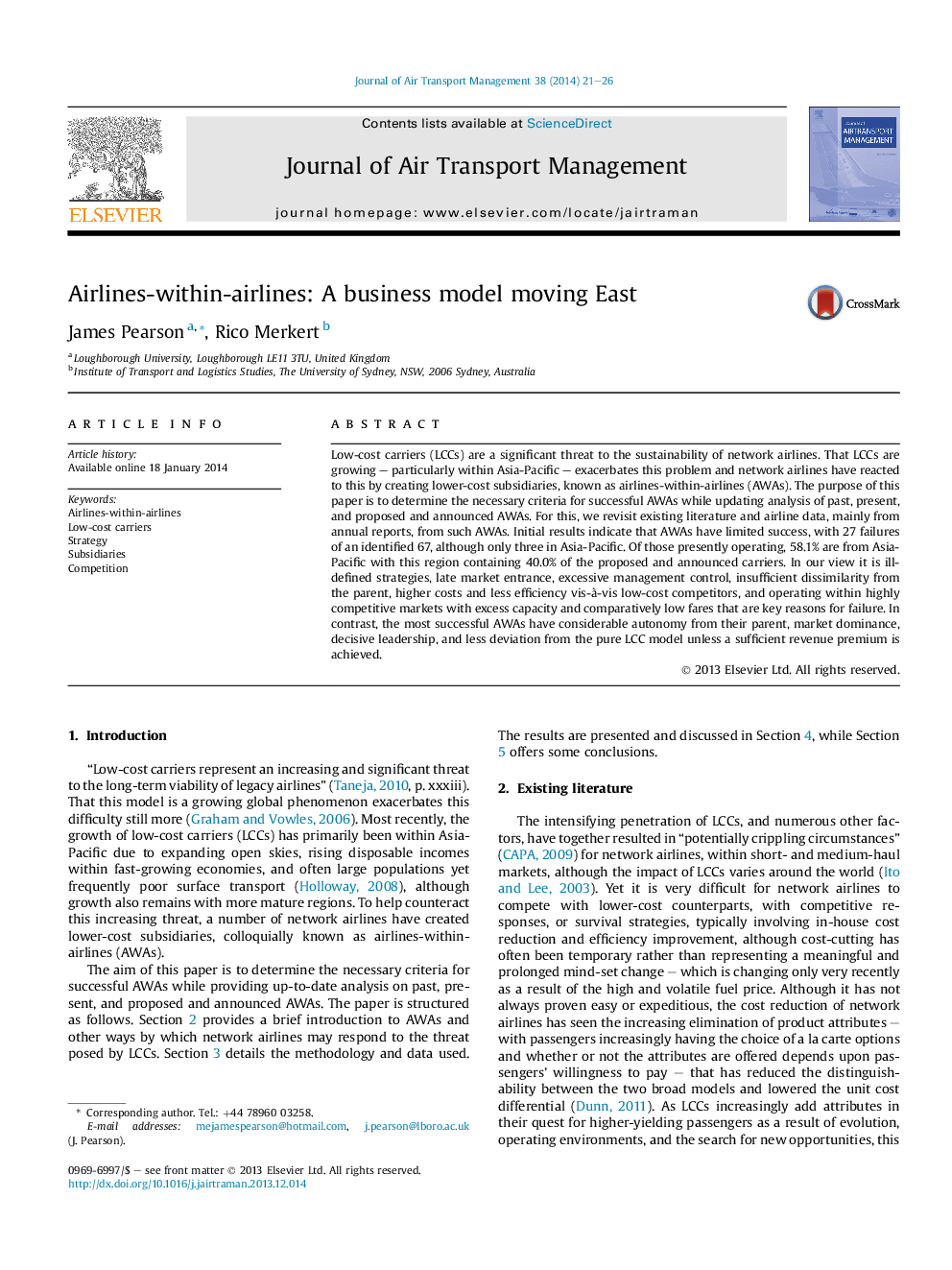| Article ID | Journal | Published Year | Pages | File Type |
|---|---|---|---|---|
| 1030854 | Journal of Air Transport Management | 2014 | 6 Pages |
•Airlines-within-airlines is about 20 years' old, so not a new competitive response.•26 AWAs have failed with 12 from Europe, 6 from the USA and 2 from Asia-Pacific.•30 AWAs presently operate, with 17 in Asia-Pacific given major growth of LCCs there.•15 of 16 AWAs had lower yields than their parents and 15 of 26 had lower LFs.•Key problems include poor strategies, higher costs and competitive markets.
Low-cost carriers (LCCs) are a significant threat to the sustainability of network airlines. That LCCs are growing – particularly within Asia-Pacific – exacerbates this problem and network airlines have reacted to this by creating lower-cost subsidiaries, known as airlines-within-airlines (AWAs). The purpose of this paper is to determine the necessary criteria for successful AWAs while updating analysis of past, present, and proposed and announced AWAs. For this, we revisit existing literature and airline data, mainly from annual reports, from such AWAs. Initial results indicate that AWAs have limited success, with 27 failures of an identified 67, although only three in Asia-Pacific. Of those presently operating, 58.1% are from Asia-Pacific with this region containing 40.0% of the proposed and announced carriers. In our view it is ill-defined strategies, late market entrance, excessive management control, insufficient dissimilarity from the parent, higher costs and less efficiency vis-à-vis low-cost competitors, and operating within highly competitive markets with excess capacity and comparatively low fares that are key reasons for failure. In contrast, the most successful AWAs have considerable autonomy from their parent, market dominance, decisive leadership, and less deviation from the pure LCC model unless a sufficient revenue premium is achieved.
